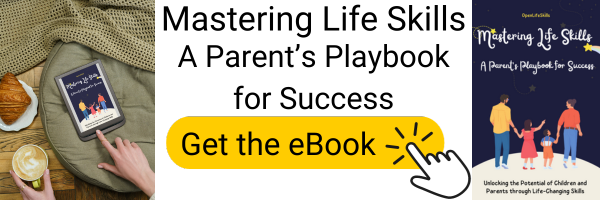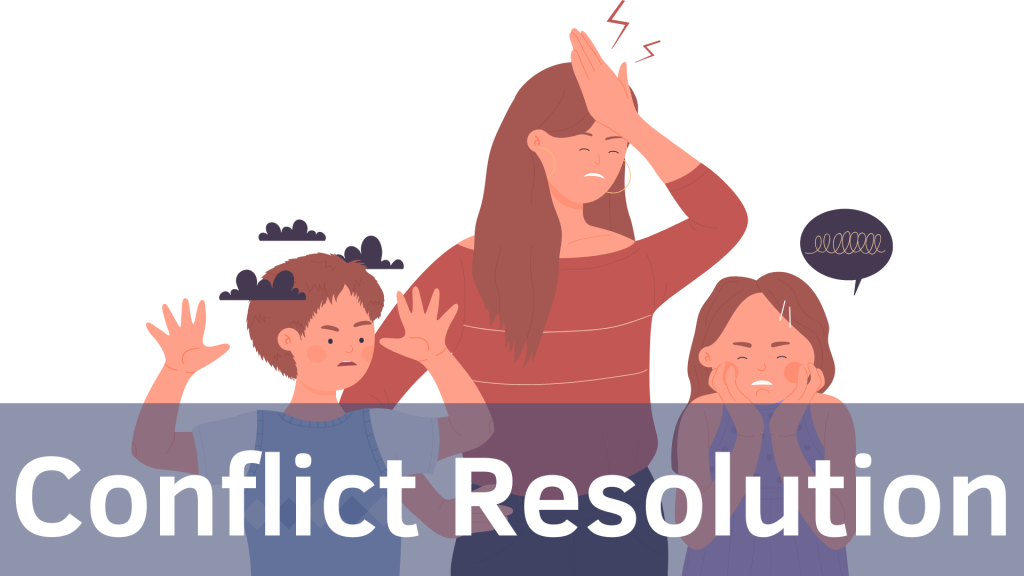Conflict is an inevitable part of life, and it often arises during childhood. Whether it’s a disagreement over toys, conflicts with friends, or more serious issues, children need to develop effective conflict resolution skills to navigate these challenges. Conflict resolution skills not only help children manage disputes but also contribute to their emotional intelligence, interpersonal relationships, and overall well-being. In this article, we will explore the importance of conflict resolution for children and provide practical strategies and activities that parents can use to teach these skills to their children.
Why Teach Conflict Resolution Strategies to Children?
Conflicts can arise in various forms during childhood, from minor disagreements to more significant confrontations. By teaching children conflict resolution strategies early on, parents can empower them with essential skills to handle disputes constructively. Here are some key reasons why teaching conflict resolution is important for children:
- Emotional Development: Conflict often triggers intense emotions in children, such as anger, frustration, hurt, or embarrassment. By teaching children to identify and understand their emotions, parents can help them develop emotional intelligence, which is crucial for conflict prevention and resolution.
- Problem-Solving Skills: Conflict resolution requires critical thinking and problem-solving skills. By teaching children how to analyze conflicts, brainstorm solutions, and evaluate options, parents empower them to become effective problem solvers in various situations.
- Communication and Empathy: Conflict resolution involves effective communication and empathy. Teaching children how to express their feelings, listen to others, and consider different perspectives fosters healthy communication skills and empathy towards others.
- Self-Confidence and Assertiveness: Conflict resolution allows children to assert themselves, express their opinions, and stand up for their beliefs when necessary. By teaching children how to assert themselves respectfully and confidently, parents boost their self-confidence and self-esteem.
- Relationship Building: Conflict resolution skills help children build and maintain healthy relationships. By finding common ground, respecting others’ opinions, and accepting differences, children learn to cultivate positive and meaningful connections with their peers.
The 5 Steps to Conflict Resolution for Kids
Teaching children a step-by-step approach to conflict resolution provides them with a practical framework to navigate conflicts. Here are five essential steps parents can guide their children through:
- STOP: When conflicts arise, it’s crucial for children to pause and prevent the situation from escalating. Encourage your child to take a step back, breathe, and calm down before addressing the conflict. Emphasize that resolving conflicts becomes more challenging when emotions are heightened.
- SAY: Help children articulate the conflict by encouraging open and honest communication. Each party involved should express their perspective, ensuring a clear understanding of the disagreement. It is essential for children to learn how to communicate their needs, desires, and boundaries effectively.
- THINK: Teach children to think of positive options for resolving the conflict. Encourage them to brainstorm solutions that consider the interests and needs of all parties involved. Fostering a collaborative mindset helps children develop empathy and explore win-win solutions.
- CHOOSE: Guide children in selecting a solution that all parties can agree on. Emphasize the importance of compromise, fairness, and finding a resolution that meets everyone’s needs to the best extent possible.
- RESPECT: Teach children to respect the opinions of others, even if they disagree. Emphasize that conflicts do not always result in complete agreement, but it is essential to maintain respect and treat others with kindness and understanding.
Effective Communication and Conflict Resolution
Effective communication is at the core of successful conflict resolution. Children need to learn how to express their feelings, needs, and concerns clearly and assertively while also actively listening to others. Here are some strategies parents can use to teach effective communication in conflict resolution:
- Use “I” statements: Encourage children to use “I” statements to express their feelings and perspectives. For example, saying, “I felt hurt when you took my toy without asking” is more constructive than accusing the other person.
- Practice writing or talking points: Encourage children to write down or discuss what they want to say before engaging in conflict resolution conversations. This practice helps children organize their thoughts and articulate their needs effectively.
- Role-play: Engage in role-playing scenarios with your child to simulate challenging conversations. By taking on different roles, children can practice expressing their opinions and listening actively. Provide constructive feedback and guidance throughout the role-play session.
- Nonverbal communication: Teach children to be aware of nonverbal cues, such as maintaining eye contact and using open body language. Discuss how nonverbal communication can enhance or hinder effective communication during conflicts.
Understanding Emotions and Identifying Conflict Sources
Before children can effectively resolve conflicts, they need to understand and manage their emotions. Parents can help children develop emotional awareness by using visual tools and providing support. Here are some strategies for addressing emotions and identifying conflict sources:
- Visual feelings chart: Utilize visual tools, such as magnetized charts or stoplights, to help children identify and express their emotions. These tools provide a tangible reference for children to recognize and label their feelings accurately.
- Coping skills toolbox: Assist children in building a toolbox of coping skills to manage intense emotions during conflicts. These skills can include deep breathing exercises, taking a break, engaging in physical activity, or spending time with a pet. Encourage children to choose coping strategies that work best for them.
- Pinpointing the source: Sometimes, the underlying cause of a conflict is not apparent to children, especially younger ones. Help children identify the root cause of the conflict by asking questions and providing support. By understanding the source, children can address the core issue effectively.
Gaining Perspective and Developing Empathy
Perspective-taking is a crucial skill in conflict resolution as it helps children develop empathy and understand the viewpoints of others. Encourage children to step back and consider different perspectives by utilizing the following strategies:
- Broaden the context: Teach children to consider the bigger picture beyond the immediate conflict. Help them understand that a single conflict does not define an entire relationship. Encourage them to reflect on their overall relationship with the person involved.
- Empathize with others: Guide children in empathizing with others by encouraging active listening and acknowledging their feelings. Help them understand that empathy can contribute to resolving conflicts and strengthening relationships.
- Consider the situation dynamics: Discuss how conflicts with different individuals, such as peers versus adults, may require different approaches. Teach children to consider the specific context of the conflict and adjust their strategies accordingly.
Conflict Resolution Activities for Children
Engaging children in conflict resolution activities can provide practical learning experiences and reinforce the skills they are developing. Here are some activities that parents can incorporate into their children’s routines:
- Play games: Games with rules offer opportunities for children to encounter conflicts and learn to navigate them. Encourage fair play and guide children through disputes that arise during gameplay.
- Create something: Engage children in writing or art exercises that involve problem-solving and conflict resolution. Encourage them to express how they would resolve conflicts through their creative work.
- Put on a play: Have children write their own scripts or collaborate on a story that explores conflict and its resolution. This activity allows children to understand the different perspectives involved and how conflicts can be resolved.
Conclusion
Conflict resolution skills are essential for children to navigate the inevitable conflicts they encounter throughout life. By teaching children how to manage conflicts constructively, parents empower them with lifelong skills in communication, problem-solving, empathy, and self-confidence. By utilizing strategies such as the five-step conflict resolution process, effective communication techniques, and understanding emotions, parents can guide their children towards successful conflict resolution. Engaging children in activities that reinforce these skills further enhances their ability to resolve conflicts independently. By investing time and effort in teaching conflict resolution, parents equip their children with valuable tools for building positive relationships and navigating the challenges that lie ahead.




